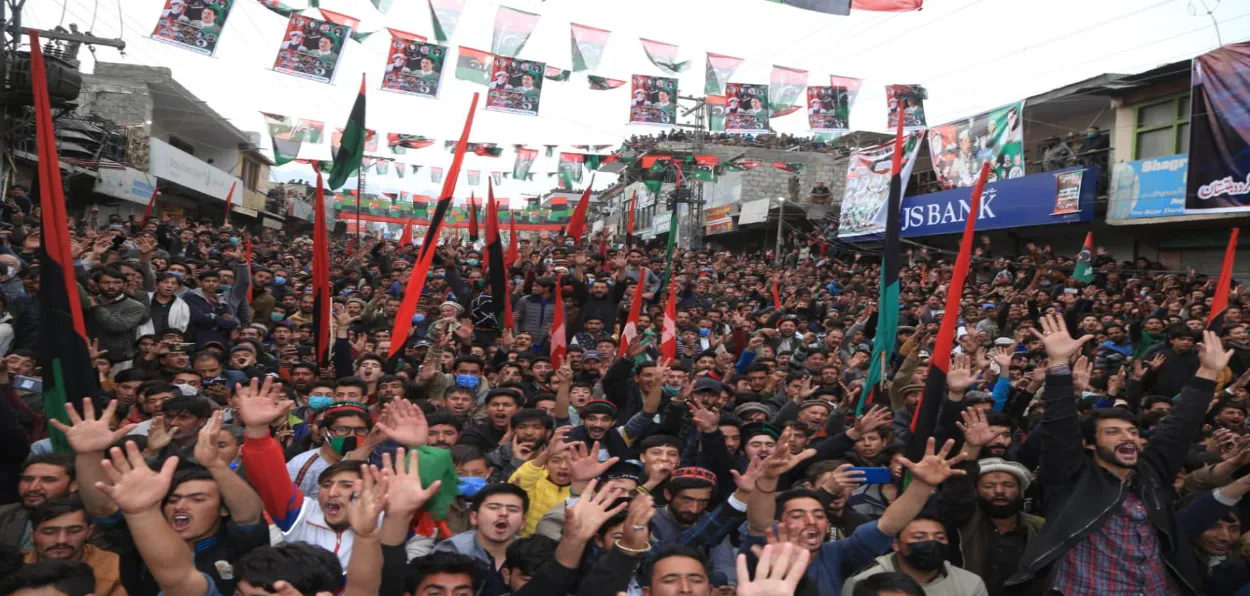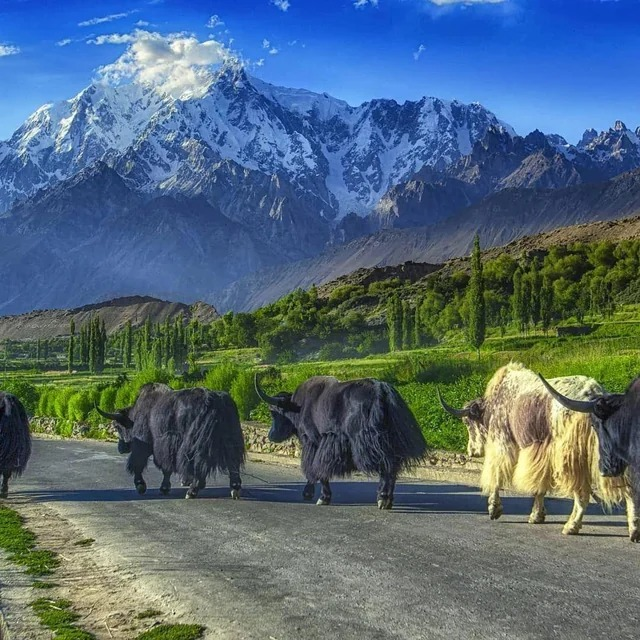
Author and Ambassador D P Srivastava exposes the Pakistani duplicity of usrurping the largest part of Pakistan occupied Jammu and Kashmir - Gilgit Baltistan - quietly through executive orders and making noises against Indian Parliament's act of abolishing Article 370 and the Supreme Court upholding it.
 D P Srivastava
D P Srivastava
The Lok Sabha elections this year saw an unprecedented voter turnout of 58.6% in Jammu and Kashmir. This is to be followed by elections to the Assembly of the Union Territory beginning September 18 in which both regional parties – National Conference and PDP are participating. This is a positive sign and shows the strengthening of the democracy.
However, both are demanding the restoration of Article 370 and State status for the territory. They have also called for Indo-Pak dialogue. The Supreme Court has upheld the constitutional validity of the government’s action in making Article 370 inoperative. The demand for restoration of Statehood can be, however, considered sympathetically.
Indeed, the Government and the Supreme Court’s judgment has given positive indications in this regard but linking domestic processes to bilateral dialogue with Pakistan raises many questions. It also calls for examining how Pakistan has treated Kashmiris on its side of the LOC.
The Northern Areas of Jammu & Kashmir, since re-named as Gilgit-Baltistan, account for 85% of the illegal territory occupied by Pakistan. POK or so-called ‘Azad Jammu & Kashmir’ is a mere 15% of the territory. Pakistan brought Northern Areas under its direct administration in 1947. The partition of the POK, and placing the bulk of its territory under the control of Pakistan’s Federal government, took place more than seven decades before the deletion of Article 370 and the bifurcation of the J&K state.
After taking over this area in November 1947, Pakistan sought to legitimize its control under the Karachi Agreement. This was signed in 1949 between Pakistan’s Ministry of Kashmir Affairs and the Muslim Conference leaders, where the latter is said to have conceded the territory to Pakistan’s
control. This was kept secret because Pakistan had changed the territorial status quo without a plebiscite. It came to light in a historical judgment of the POK High Court in 1993, which described Pakistan’s actions as a violation of the UN Security Council resolutions.
The High Court upheld the plea of all the political parties of POK that the territory be returned to the latter. Pakistan got the High Court’s orders set aside by the POK Supreme Court on mere procedural grounds. It has continued to hold on to this territory despite the ‘wishes of the people’ of POK.
The nomenclature ‘Gilgit-Baltistan’ is of recent origin. For more than five decades, the region was referred to as the Northern Areas in Pakistan’s official papers. The change was brought out to obfuscate issues and erase memories that this was originally part of Jammu and Kashmir, and after Pakistan’s illegal occupation in 1947 part of POJK.
 Yaks in Gilgit Baltistan
Yaks in Gilgit Baltistan
The Gilgit-Baltistan Orders issued by Islamabad are the supreme law of the region. These are executive fiats, as the title suggests, not a constitution adopted by the elected Assembly. POK for cosmetic purposes has been allowed an ‘Interim Constitution’. G-B has none. In effect, Pakistan has absorbed the territory in all but name.
Sectarian tensions
Gilgit-Baltistan is the only Shia-majority region under Pakistan’s direct control. This has brought some unwelcome attention from the Pakistani Army. There were Shia-Sunni riots in the Zia period. Musharraf, at the time a Brigadier in the Special Services Group (SSG) was deployed in the region. He is believed to have played a key part in organising Shia killings. He inducted a tribal band of Sunnis, and extremists from SSP (Sipsh-e-Sahaba-e-Pakistan) to attack Shia villages.
The Northern Areas were used as a training ground for terrorists and a launch pad for the Kargil invasion across the LOC in the Indian Territory. Many Jehadi groups like Laskar-e-Tayeba or Jaish-e-Mohammad, who were brought from outside, stayed back in the area. Their activities have intensified sectarian rift.
Strategic area and Army’s increasing control
This is the region from where the Indus River enters Pakistan. This is also the entry point for the China-Pakistan Economic Corridor (CPEC) into Pakistan. Its strategic importance has invited increased control of Pakistan’s Army. G-B Order of 2009 had given the elected assembly limited powers over 61 subjects. The Order was issued under President Zardari, who is a Shia, and sympathetic to this Shia-majority region. Under the G-B Order of 2018, this entire list was abolished. All the legislative powers are now vested in the Prime Minister of Pakistan, who is an extra-constitutional authority and is not responsible to the elected Assembly or the people of Gilgit-Baltistan.
Pakistan has signed an MOU with China for the development of the 4,500 MW Daimer-Bhashahydro-electric power plant. The construction of the dam will disturb the ecology of the region. Pakistan is going ahead with the project despite the massive floods of 2022, which happened because of glacial melt. The project would improve power supply in Pakistan but, interestingly, Gilgit-Baltistan will not benefit as the region is not connected to Pakistan’s national grid.
(The author is a former Ambassador to Iran & author of “Forgotten Kashmir: The Other Side of the Line of Control”)
